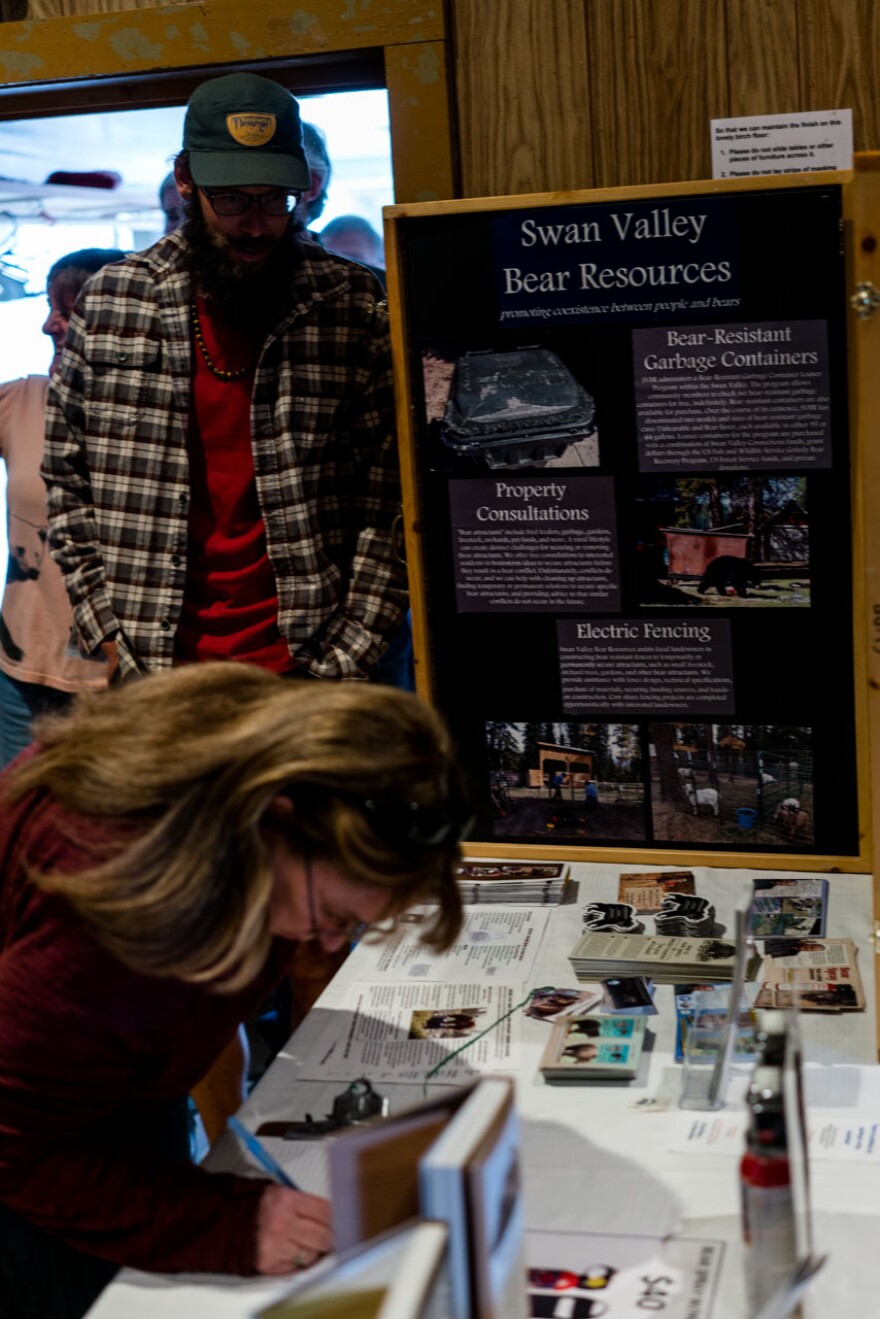Wildlife officials received 150 calls related to grizzly conflicts with people in northwest Montana last year, a Montana Fish, Wildlife and Parks (FWP) report released last week says. An event in Bigfork Thursday night was geared towards reducing those conflicts and helping the growing populations of both people and grizzlies in bear country get along.
FWP grizzly management specialist Tim Manley, who authored that report, updated the more than 100 attendees of the Spring Bear Wake-Up Social on the latest goings-on of grizzlies.
"What are bears doing right now? I flew yesterday in a helicopter. Bears are coming out of their dens."
He says right now, the bruins are hungry. Grizzlies in the spring act a lot like cattle, grazing for favorite plants like cow-parsnip, a native plant in the carrot family with a white flower. They also forage along moist soil at the edges of avalanche chutes.
"Spring is also ae time when they hunt deer fawns, elk calves. There’s about a one to two-week time period where they’re kinda vulnerable and the bears can actually catch ‘em," Manley says.
Manley’s region of the state contains part of the Northern Continental Divide Ecosystem (NCDE), home to the largest population of grizzlies in the lower 48, and they’re protected as "threatened" under the Endangered Species Act.
The report showed a 50 percent rise in calls about conflicts over the 25-year average. Twenty different bears were captured last year, and nine of those ended up dead.
Both calls related to grizzly conflicts, and captures have been much higher in a few individual years in the past, especially due to poor huckleberry crops that sent grizzlies searching for food near homes.
Last year was a record year for deaths and removal of grizzlies by wildlife managers across the NCDE, with a bulk of deaths concentrated on roads. Grizzlies that died in Manley’s region met their demise from trains, illegal hunting, natural causes and removal due to misbehavior.

"I ended up removing five grizzly bears last year through management actions. These were bears that had caused a lot of property damage or were causing repeated conflicts, and the decisions were made to remove them and I had to end up euthanizing them. And that’s the worst part of my job."
He says when grizzlies get food from residences, they can get too conditioned to people. They act a bit like eager, misbehaving puppies, trying to get grub from wherever they can. That means trash, outdoor freezers, bird feeders, pet food, fruit trees, even gut piles.
Grizzlies are smart and love sweet treats so much, they’ll sometimes climb up a tree and shake it to get all the apples or pears to rain to the ground. Manley has the video to prove it.
"Here she is shaking the tree ... And she climbs back down and she’s gonna eat apples now too."

He says there’s a lot homeowners can do to safely live with bears and prevent behavior like this. He says for one, pick all the apples from your trees. He hopes to get a fruit gleaning program going in the area this year to help with that task.
Knowingly putting out wildlife feed is illegal in Montana, and can attract bears too.
Last year, FWP helped install 18 permanent and temporary electric fences in the area, conducted 20 presentations and workshops, and loaned out 13 electric fence energizers, 20 bear-resistant trash cans, and 15 noisemakers called "critter gitters" that scare bears away.
Anne Pelham of Columbia Falls says she’s seen Manley present four times.
"I learn something new every time and I’m fascinated by the bears and making sure that we do everything can to keep neighbors from attracting them."
Pelham lives on 10 acres, and much of that land is protected by electric fence.
"And nothing comes into our property. Our dogs are safe, our horses, our mules."
She says she also keeps her garbage in tight cans in the garage
"Yeah, just keep smells down, and clean. It’s an important thing."
The event was hosted by FWP and conservation-based nonprofit Swan Valley Connections. Author and biologist Doug Chadwick also presented on bears in the Gobi desert and grizzly connectivity across North America.
The Interagency Grizzly Bear Committee will host a different meeting Tuesday, April 30 on how the federal government, state and tribes are working together to manage the expanding population of NCDE bears. That meeting features the opportunity for public comment, and is at 9 a.m. at the Hilton Garden Inn in Kalispell.


